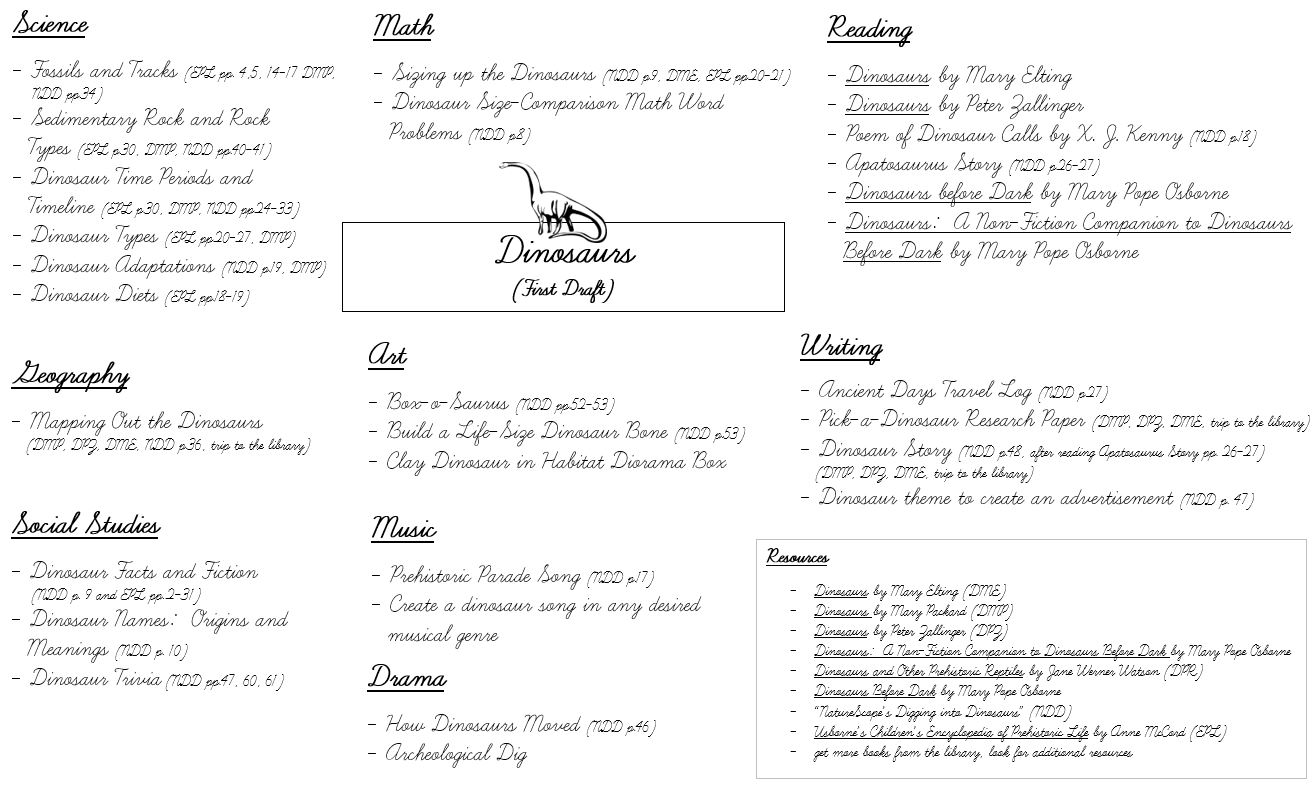8.4 The Inherency of Interdisciplinarity

Does a fox learn to hunt or is it instinctual?
The above photo calls into question nature versus nurture, which is an old debate. It seems natural that an interdisciplinary strategy is how humans learn in everyday life. Schools, even ancient ones, have segmented learning into labeled chunks of subject matter: mathematics, rhetoric, philosophy, and so on. Teachers are trained in these various subject areas, because that is how the curriculum is structured. However, while schools maintain this framework, teachers within the classroom often plan their units and lessons using an interdisciplinary method. Below is a sample template of what some teachers at Helen Thomson School, in Gardiner, Maine, used to plan out a unit.

Activities and lessons would be written below each subject area, ensuring that all were included. Publications, such as Ranger Rick’s Nature Scope, from the National Wildlife Federation, provided educators with books on various topics, such as dinosaurs, geology, habitats, weather, astronomy, specific animals, plants, and insect groups, etc. Seventeen books were included and were used by teachers and nature camps.
One of the big questions surrounding interdisciplinarity is: is learning cultivated over time or is it an inherited human trait of humans? In the field of teaching, we often hear this question: do teachers become interdisciplinary individuals, or do interdisciplinary individuals become teachers? One would suggest that teachers become teachers and develop a sense of interdisciplinarity through a theory of practice. The latter would conclude that individuals become teachers through some law of nature. The debate of learned interdisciplinarity or inherent interdisciplinarity is an interesting area for future research on this topic.
| Theory of Practice | Law of Nature |
|---|---|
|
|
One of the cases for a theory of practice is that there is very little research on the natural ability to teach, given the paradigm of teaching reflects growing into the role and expanding growth through professional development. On the other hand, research outside of the field of education, predominantly in fields of anthropology, develops interesting theories on the ability of early humans, suggesting building connections with creative learning developed over 40,000 years ago[9]. The question that is at the centre of this debate is: how do we know how to know? Perhaps it returns to epistemology and how we craft knowledge. The deeper question here is: do we craft knowledge from an environmental perspective? Or is it some natural cognitive mechanism built into humans, the same built in to our parents, and their parents, and their parents, and so on?
Interdisciplinarity is a dynamic field, always introducing questions relating to its purpose. Further inquiry relating to the developed or inherent traits of interdisciplinarity opens new doors to understanding learning and its purpose in our lives. The topic of naturalism with interdisciplinarity may be a key to understanding learning on a whole new level, with deep implications for the future of teaching and learning.
Design Thinking and Global Interdisciplinarity
A common theme with interdisciplinarity is how students relate to their institution outside of the classroom walls. For an outlook of interdisciplinarity in the future of institutions, we can look towards the process of design thinking, as described by Molinari and Gasparini, to introduce students towards democratized concepts of creative interdisciplinarity in two areas leading to enhanced creativity and connection to their institution[10]:
- Student-Centred Learning.
- Participation in University Governance.
These two areas are beneficial for students both inside the classroom and outside the classroom connect them to inherent interdisciplinarity. For example, student-centred learning inside the classroom that is focused on student engagement enhances their out-of-class academics in work and relationships through social epistemological growth. This is important not only for students but also for educators. Increasingly, the academy is acknowledging that interdisciplinarity learning is becoming more prevalent as we move toward a more connected world. Global interdisciplinarity is found in the willingness of educators and administrators to enhance the competency of interdisciplinarity in their teaching across borders and across cultures[11]. The inherency of interdisciplinarity seems to be proliferating as a concept for how we manage learning and teaching inside post-secondary educational institutions. Fill in the blanks below for a more cohesive understanding of design thinking and global interdisciplinarity.

